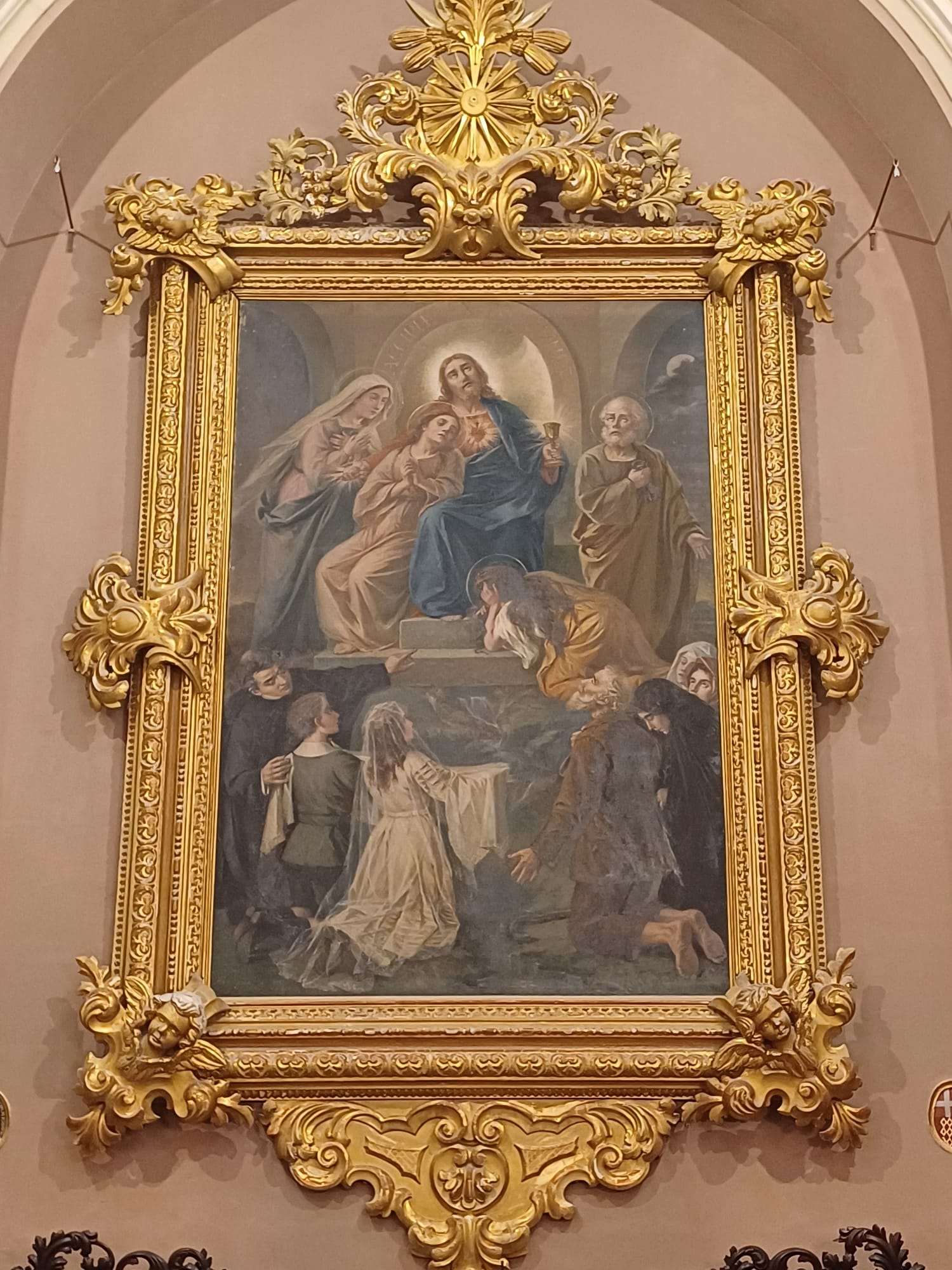
“Come to me”
The sixth reflection about the painting of the Sacred Heart of Jesus at St Ubaldesca Church, Paola
At that time Jesus declared, “I thank thee, Father, Lord of heaven and earth, that thou hast hidden these things from the wise and understanding and revealed them to babes… Come to me, all who labour and are heavy laden, and I will give you rest. Take my yoke upon you, and learn from me; for I am gentle and lowly in heart, and you will find rest for your souls.
Matthew 11:25, 28-29
In the upper part of the painting, Lazzaro Pisani depicts Jesus surrounded by persons that feature prominently in the accounts of his earthly life—ones through whom the Church was founded. Meanwhile, in the lower part of the painting we see persons who belong to the People of God today—the Pilgrim Church on earth.
Dressed in clothes of the period in which the painting was made, we find seven figures kneeling around the rock on which the throne of Jesus is perched. Their ages vary and all come from different walks of life, but between them they represent the entire People of God.
Starting from our left-hand side, the first figure is that of a priest in a cassock, accompanying a boy and a girl poised to receive communion. The priest is clasping the edging of a strip of white cloth which the children are holding in their arms. This cloth is like those used in days of old during communion to catch any fragments dropped from consecrated hosts. It is worth keeping in mind that this painting dates to 1911, just one year after Pope Pius X’s decree Quam Singulari lowered the age of First Holy Communion to 7 years old—which is when children reach the age of reason and can distinguish the Eucharist from common bread.
Moving on, we see a man, barefoot, so likely poor, and of an advanced age, his walking stick placed on the ground in front of him. Next is a woman dressed in black, the faldetta covering her head thus making it difficult to determine her age. The last figures, whose faces only are visible, are two relatively young ladies, one wearing a coloured mantilla, the other, possibly a nun, in a white mantilla.
Although kneeling in different positions, we can tell that each one demonstrates worship and deep faith in the Eucharist and in the heart of flesh of God. It is also worth recalling that in the early twentieth century, the population of Paola had begun to grow significantly and was made up of mostly working-class people. It is therefore not surprising that in the Year A readings cycle, the Church chooses the verses quoted above, in which Jesus praises the Father for revealing these mysteries of the Kingdom to babes—those who acknowledge their meekness before God and who humble themselves before him—while inviting all of humanity and saying, “Come to me!”
Does this invitation-command of Jesus reverberate also in your ears? If not, rather than thoroughly cleaning your ears, you would do better to put away some of your pride. But take heart: there is room for you too at his feet, to look on Him whom they pierced and to come boldly to the throne of grace, that you may obtain mercy and find grace to help in time of need (see Heb 4:16).



